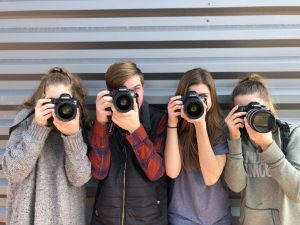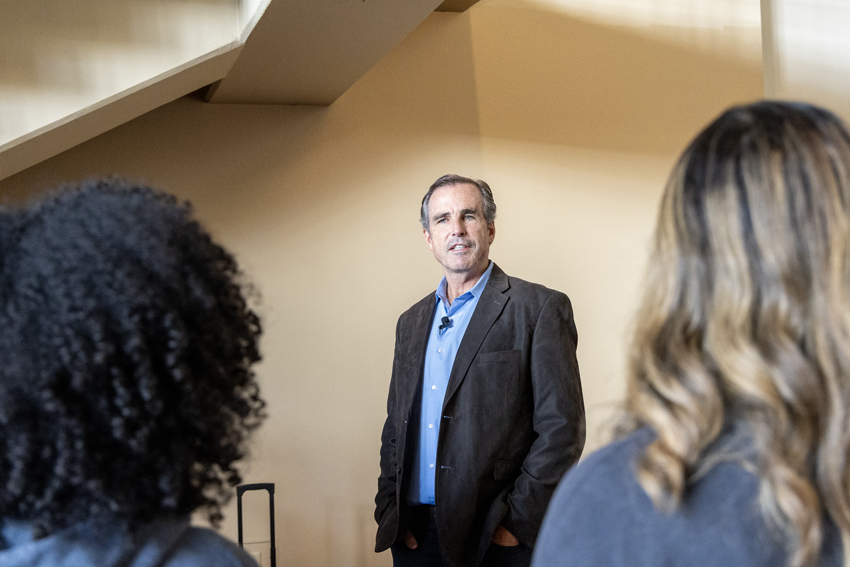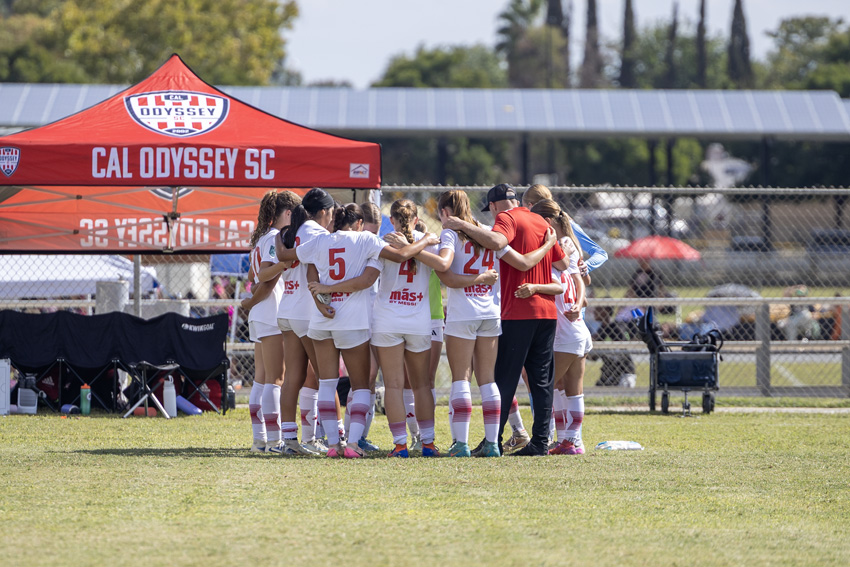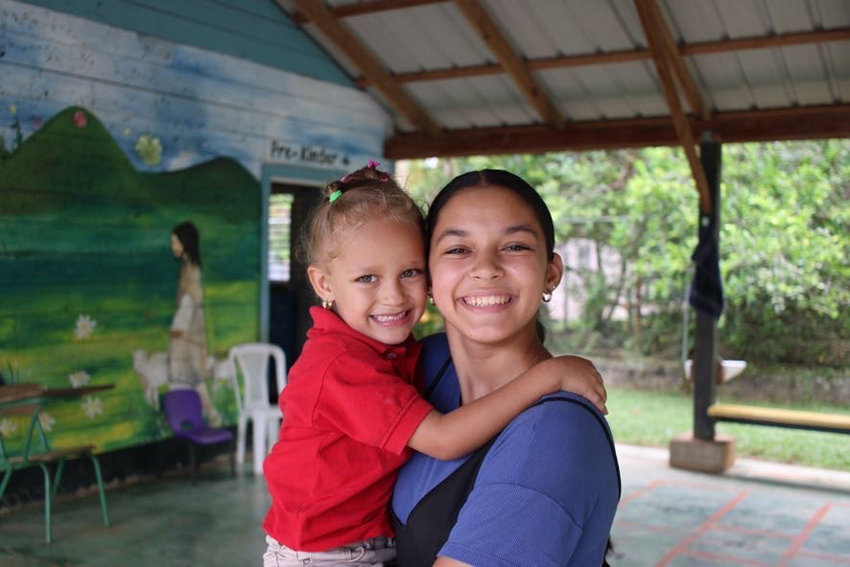Photojournalist team explains struggles, advantages
A crucial part of journalism is media, including photos or videos, which adds depth to news that words cannot. At times, a photo can tell the viewer more by itself than thousands of words could. That is why we have a team specifically for photojournalism. As The Feather operates as a multi-platform scholastic news page, we work hard to provide media that fits into specific articles to add a finishing touch. The life and times of a photojournalist for The Feather consists of a lot of work, skill and reliance on teamwork. In this article, several members of our photojournalism team will show the ins and outs of what it takes to be a photojournalist for our news site.

As photojournalists, our team has a variety of tasks that we are responsible for. The space that we get to show off our work is the media page of the website. Each photojournalist is responsible for publishing three photo posts each week. Through this media page, we highlight events on and off campus, sharing news through a smaller scale than a full article.
Our team is also in charge of photos for social media. The Feather operates not just off the website, but on social media as well, so a big part of our job is to provide photos for Instagram, Twitter and Facebook.
We are wholly responsible for Instagram. Each day, our team posts three to seven photos a day displaying student life, activities and sports. Our job is to “capture the life and times of FCS” through photos. This type of work takes lots of time, teamwork and work ethic. Not everything we do is fun and games, our work takes effort and we cannot waste time or slack-off. As a team, we can accomplish far more than we ever could on our own. Accountability for one another is how we finish the work we might not have time to do.
On a day to day basis, each of us take an average of 40-500 photos, depending on the event that day. Immediately following the photo taking, comes the transferal of images from camera to phone. The steps of downloading to phone, once stressful and confusing, become routine and second nature. Images wifi directly to the phone so we can post on social media without editing. For the website, photos undergo a process of simple editing to enhance the image. The full process takes anywhere from 15 to 45 minutes depending on the size of the event.
Photos taken from events are sent out to Twitter, Facebook and Instagram to produce different photos on various social media platforms. Similar to articles, photos must be different than any others used before. This creates a challenge when shooting, needing to produce around 20 different image perspectives.
Skills we attain in photography and writing teach us professionalism. Another advantage on this team is to experience various school events from a different perspective. While at school events, we are constantly looking for a specific place to find the perfect shot. We find unique spots allowing us and the viewer to see things differently.
Another perk of being a part photojournalism is the opportunity to use Canon gear. We have a large collection of professional gear which we get to use on a daily basis. It allows us to use a wide variety of equipment, expanding our ability to work with anything.
Most people do not see what happens behind the lens of a photojournalist. Constant editing, writing and running around to get the right photo is a normal day. There is hardly ever a dull or slow time taking pictures for articles, our own media page, writing photo posts and social media. Every day the team is required to look through the photo request box to see if any articles need pictures for them. The problem with this system is lack of description and deadlines by which they need pictures. It makes our job difficult to produce great photos at the right time.

Not only can photography and journaling take sacrifice during school hours, but also off campus and school events. Often times, we skip participation of high school rallies and chapels to capture these moments.
The main source of struggle for photojournalists is accepting the fact of making mistakes. We need our teamates to assist us especailly when help is needed. Juggling sports, education, hobbies, The Feather and a social life is nearly impossible alone and can become discouraging with so much on our plates.
One of the most important parts of what we do on The Feather is work as a team. We constantly help each other process photos, write and proofread posts and make sure social media is covered.
This is critical for the photo team to function. Without constant communication nothing can get accomplished. In many cases, multiple events happen at the same time and there needs to be more than one photographer on duty. A unique aspect of the “PJ” team is everyone’s cooperation and readiness to help out.
The amount of teamwork we put in together makes the busy times enjoyable and fun. By working together the overall process from beginning to end goes way faster.
Another benefit of constant correction and reading each other’s posts is the opportunity to grow personally by seeing different styles other people use in writing. This can aid to a variety in writing style and give ideas of what you like and don’t like reading. Photojournalism trains students to work side by side with people on a regular basis. It resembles a sport with a team aspect and also a real job with responsibilities.

Like any team, communication is key. Often times, the finished product has been worked on by several teammates along the process. With the number of complicated steps, time-consuming work and short deadlines, one teammate will write an instagram or photo post, another finish processing images and the other creating a slideshow.
A photojournalist finds no time to rest throughout the week and occasionally on the weekend. Classes and lunch periods may be missed due to community events or on-campus activities. It is up to photojournalists to make up missed work and complete images in a timely manner. Weekend events are also covered and pictures prepared the same day or following Monday.
There is never a free moment for a photojournalist. Being tied to the server limits opportunity to work on pictures. Frantically completing a last-minute photo for an article that is running next period is, as you can imagine, frantic. Photojournalists do their job to ensure a visually pleasing experience while viewers read articles.
As with any job, photojournalism tends to have its quirks and pesky tasks from time to time. Our team has developed some particular pet peeves, ones which annoy us in a different way than most people could understand. However, our team chooses to see errors as opportunities for improvement rather than failure.
Skills we attain in photography and writing teach us professionalism. Another advantage on this team is to experience various school events from a different perspective. While at school events, we are constantly looking for a specific place to find the perfect shot. We find unique spots allowing us and the viewer to see things differently. — Feather photojournalists
A part of accomplishing work we need to do every week is having photo request forms turned in. A description must aid details to where, when, and what the journalists need photos of. Unfortunately, many journalists forget to turn these in which results in us having to take photos right before the article is published. When we are rushed, we do not have as much time to make our photos as exciting and unique.
One of the biggest problems which conflict with our team capturing the perfect photo is bad cooperation of the person being photographed.

Although we want students to look happy, facial expressions often mess up our photos. Our goal is to capture students all around campus the same way you would see them if you were sitting right next to them watching.
The last major pet peeve that we have as a team is demand for photos right on the spot which most of the time is not a realistic timeline. Capturing, editing and processing photos take a significant amount of time. As a team, we spend countless hours each week working to accomplish tasks placed upon us.
Through this article, we hope to show the process that we follow to supply media for our page; showcasing photojournalism at its highs and lows. Regardless, dedication and work ethic from our team helps us to grow as professional photographers, students, and teammates. Skills The Feather provides to its media team carry on into the remainder of students lives, giving head starts into careers not just with camera skills, but in dedication.
Thank you for your cooperation in allowing in to capture the life and times of FC. If you have anything you would like to share, we would love to hear you thoughts down below!
The slideshow below shows photojournalists working to accomplish their tasks:
[rev_slider alias=”photojournalismarticle”]
For Feather photos, visit media, photos 2017-18. Photojournalist memebrs from The Feather team that contributed to the making of this article include Juniors Julia Fikse, Kaylie Clem and sophomore Blake Deffenbacher.





Braden Bell • Feb 8, 2018 at 3:46 pm
SO thankful for all of the photojournalists! You all are a vital aspect of the team and we could not do it without you. Thank you for all your hard work and commitment.
Amy • Feb 7, 2018 at 5:15 pm
It is fun to watch your team in action! So thankful for the skills you are developing and the passion you give to your work.